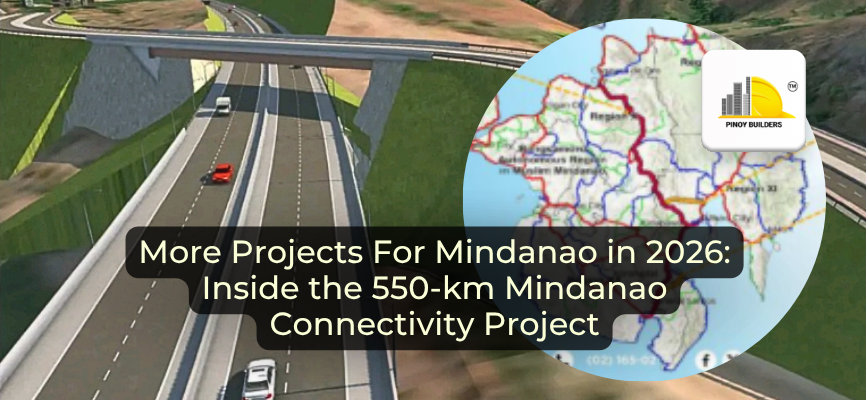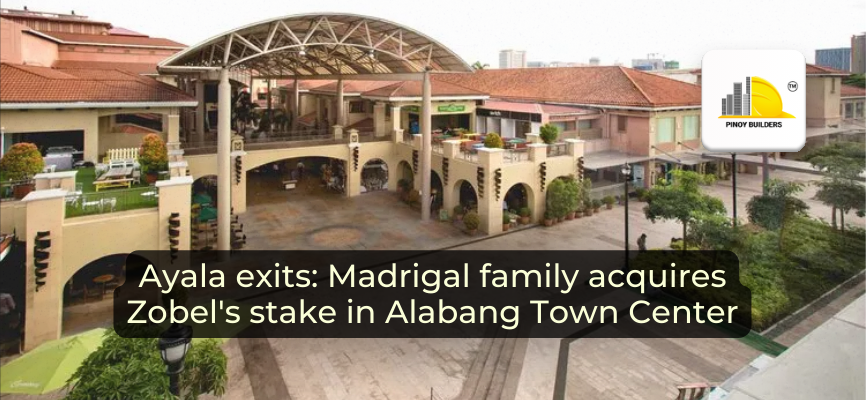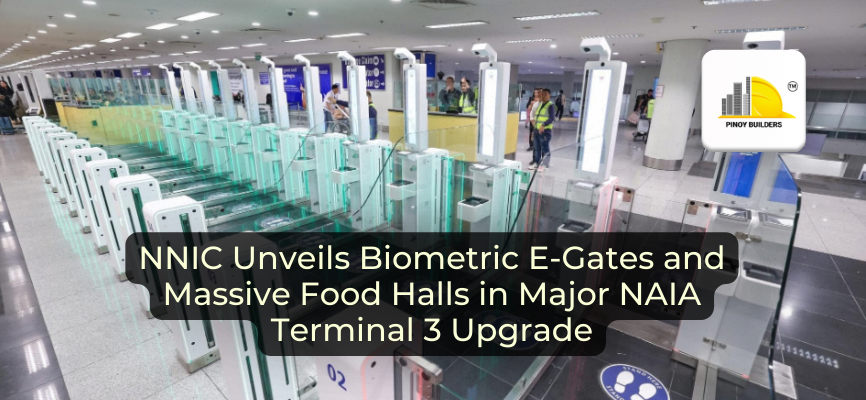Mindanao is home to many thriving cities and promising communities, each rich with culture and natural beauty. But what truly strengthens a region’s growth is how easily people and goods can move across it. Traveling across Mindanao often means passing through scenic routes that stretch for hours, connecting coastal towns, urban centers, and rural provinces. These long drives reveal both the island’s vast potential and the need for better, faster, and safer connections between its key areas.
In 2026, a significant step forward will begin. The Mindanao Transport Connectivity Improvement Project (MTCIP) aims to build around 550 kilometers of upgraded roads, bridges, and access points across the island. This project will improve travel conditions, cut transport times, and open more opportunities for trade, tourism, and local development. Communities will find it easier to reach markets, schools, and services, while businesses can transport products more efficiently across regions.
In this article, we will explore how the Mindanao Connectivity Project is set to transform mobility, boost economic activity, and support sustainable growth across the island.

Inside the Mindanao Transport Connectivity Improvement Project (MTCIP)
The MTCIP is an ambitious 550-kilometer infrastructure plan designed to boost mobility and strengthen economic links across Mindanao. Backed by a total investment of ₱37 billion, the project receives ₱25.46 billion in support from the World Bank and ₱11.54 billion from the Philippine government.
Led by the Department of Public Works and Highways (DPWH), the project brings together the World Bank, national agencies, and Mindanao’s local governments. A key milestone occurred on October 10, 2025, in Cagayan de Oro, when leaders gathered to align on the project’s direction and coordination.
What the Project Covers
At the heart of the MTCIP lies the 422-kilometer main corridor connecting Cagayan de Oro, Davao, and General Santos. This route is a vital link for trade, travel, and logistics, serving millions of Mindanaoans.
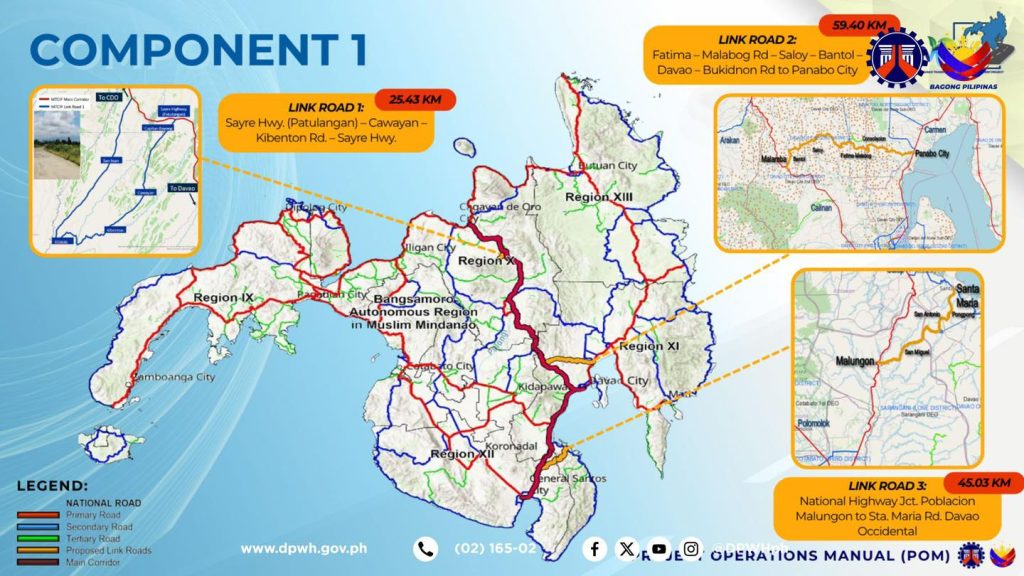
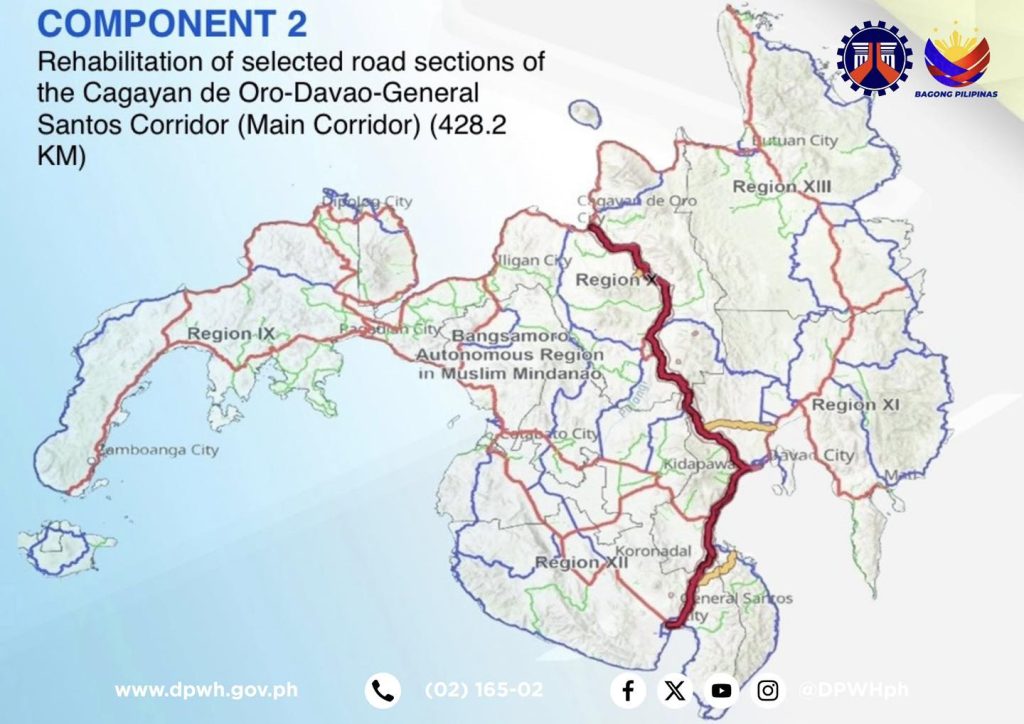
Complementing the corridor are 128 kilometers of agricultural link roads, designed to connect farmlands and rural areas to major markets:
- Sayre Highway (Patulungan)–Cawayan–Kibenton Road (25.03 km)
- Fatima–Malabog–Saloy–Panabo City Road (59.40 km)
- Poblacion–Malungon–Sta. Maria Road (44.03 km)
The project’s design phase will begin in January 2026 and continue through late 2027. Construction will start soon after, followed by a five-year maintenance program to ensure quality and safety.
Collaboration and Governance
To oversee the project’s success, the DPWH established a Project Steering Committee (PSC) through Special Order No. 167 signed by Secretary Vince Dizon. The committee includes representatives from the Department of Finance, the National Economic and Development Authority, the Department of Budget and Management, the Department of the Interior and Local Government, the Mindanao Development Authority, and local government units across the region.
The World Bank also plays an active role through Senior Transport Specialist John Kobina Richardson.
Building for the Future: Sustainability and Safety
The MTCIP is designed not only to connect roads but also to promote sustainable growth. It includes an Integrity Management Plan to ensure transparency and accountability from start to finish.
Advanced tools such as digital mapping and climate-resilient design will help maintain the infrastructure for years to come. Capacity-building programs will train local engineers and planners, while contingency measures and community engagement plans will ensure development aligns with local residents’ needs.
A Connected Future for Mindanao
Every kilometer built under the MTCIP brings Mindanao closer together. The project promises shorter travel times, safer roads, and stronger local economies. Farmers will reach markets faster, travelers will enjoy smoother routes, and communities will benefit from increased accessibility.
The Mindanao Transport Connectivity Improvement Project is a symbol of progress, built to support growth, inclusion, and long-term development in Mindanao. As DPWH Senior Undersecretary Emil K. Sadai stated:
“The MTCIP is not just a DPWH or World Bank project—it is a Mindanaoan project.”
References
DPWH. (n.d.). Stronger roads ahead: DPWH, World Bank, Agencies, and LGUs unite for 550-km Mindanao Connectivity Project. Philippine Information Agency. https://pia.gov.ph/news/stronger-roads-ahead-dpwh-world-bank-agencies-and-lgus-unite-for-550-km-mindanao-connectivity-project/#:~:text=The%20project%20aims%20to%20improve,Davao%20Region%2C%20and%20Central%20Mindanaon


